Organized crime groups
The operation of 12 OCGs has been registered in Serbia.
Most of them have a relatively rigid structure and a clear hierarchy. Their activities are dynamic, they quickly adapt to all conditions and have significant financial power. They are prepared to cooperate with similar groups on the regional and wider international levels, and do not refrain from using violence.
The operation of 12 organized crime groups (OCGs) has been registered in Serbia, which have an average of eight key members each. Most of the OCGs still have relatively rigid structure, a clear hierarchy and division of roles into the leader and key, specialized and low-ranking members. The rules of hierarchy and internal discipline are strict, and in some groups they are enforced by threats and force. Some leaders have strong connections with the key members, through family and friendship ties, through shared criminal backgrounds, as well as through ethnicity. Young people, who are hired for low-ranking positions, most frequently do not have prior convictions, are in a bad socioeconomic position and are quickly replaced by new members in case of prosecution.
OCGs that have a high degree of organization and are also active at the international level, are characterized by a network of branches and collaborators abroad (in Europe and on other continents), which enables them to have more efficient coordination and logistical support. Collaborators are situated in all places of significance for the group’s criminal activity, while specialists are hired occasionally (experts on finance, chemistry and IT, experts for the mechanical modification of vehicles, for counterfeiting of documents, etc.). One of the active models of operation is through a highly organized network made up of multiple independent cells from the Balkans, i.e. from Serbia, Montenegro, Croatia, Bosnia and Herzegovina and Slovenia, with clearly divided roles and previously prepared tasks in the criminal activity chain.
Criminal Activities
Seven OCGs deal with the smuggling and trafficking of narcotics, while four of them are specialized only for this field of crime. One third of all registered groups are poly-criminal – engaged in other criminal activities in addition to the primary one. Three quarters of the groups operate both in Serbia and abroad.
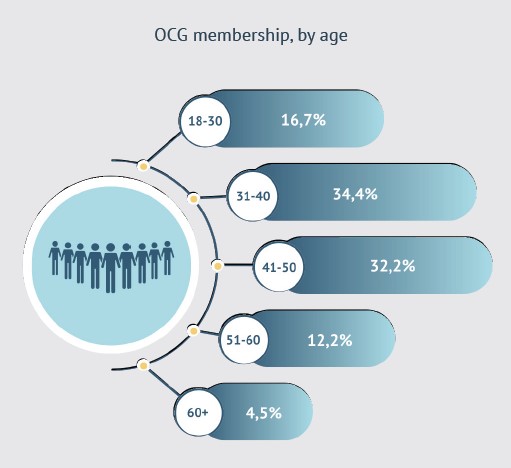
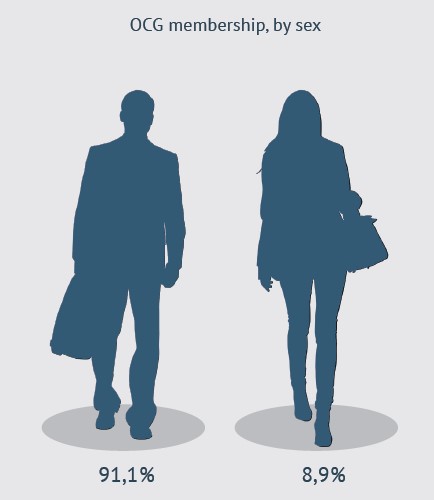
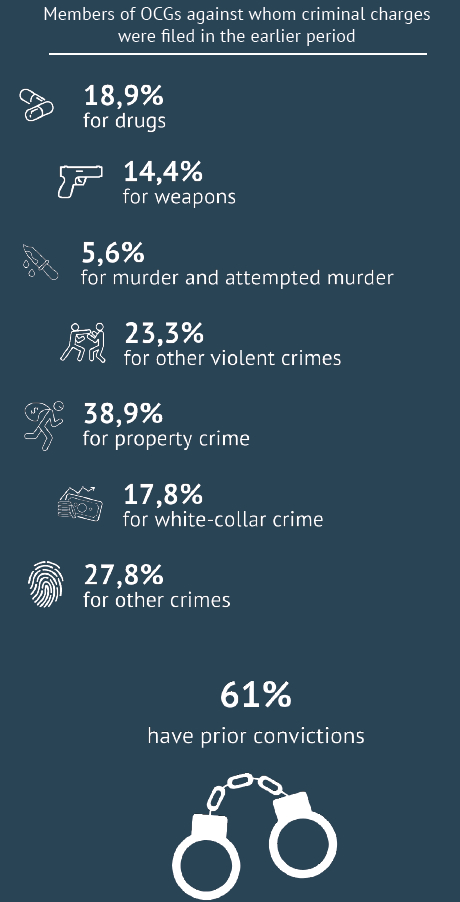
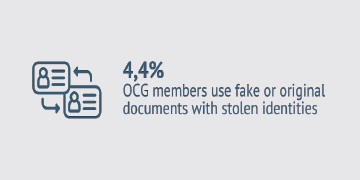
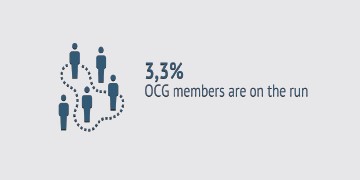
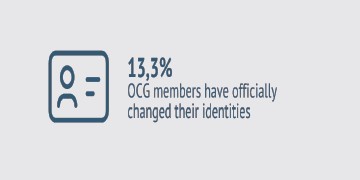
In addition to the smuggling and trafficking in narcotics, registered OCGs are also involved in firearms smuggling, vehicle smuggling, property crime, human trafficking (for the purpose of mendicity and labor and sexual exploitation), migrant smuggling, forging of documents, money laundering, etc.
Flexibility and Possibility to Adapt to Crime Markets
One of the key characteristics of OCGs is their ability to quickly adapt to all changes in the area where they operate, which results in changes or modifications of their MOs. Their preparedness to adapt to the demands of the crime market was particularly pronounced during the COVID-19 pandemic, when the smuggling routes and territory of operation changed and criminal activities reoriented abroad.
The ability to turn to new areas of activity and to adapt to the new requirements of the crime market is particularly demonstrated by groups with a medium level of organization. Most of them are poly-criminal – in addition to primary criminal activity, they also engage in other types of crime on an ad hoc basis in order to generate greater proceeds. An obvious example are groups that primarily smuggle narcotics, but use their channels also for the transfer of migrants, weapons, explosive devices, excise goods, etc.
Use of Fake Documents
In order to regulate their stay, facilitate their movement and commission of crimes abroad, as well as in order to avoid detection and criminal liability, OCG members either officially change their identities, sometimes repeatedly, or use fake IDs. There are groups which forge documents of the Republic of Serbia and several European countries (identity cards, passports, drivers’ licenses, residence permits, etc.). They charge different amounts for these documents, depending on whether they also have to create a fake identity, as well as on the type of document, level of protection and quality of the forgery.
Despite different protective elements on IDs, OCG members acquire original biometric documents, mostly from the countries in the region. In exchange for a fee, they most frequently hire experts or OCGs specializing in the acquisition of forged documents for the needs of other OCGs. Such groups primarily resort to corruption in order to obtain data on deceased and displaced persons or persons who have never filed for the issuance of IDs and thus obtain documents which are later attached to requests for the issuance of original biometric documents into the names of persons whose identities they have stolen.
Links with Other OCGs
OCGs that operate in Serbia and abroad are closely connected to similar groups operating in the country and the region, primarily for the purpose of achieving common goals, generating and concealing illegal proceeds and placing it into legal flows. Western Balkan OCGs have special connections because of their shared criminal past, friendly and family ties and absence of a language barrier. Their cooperation may be both on a long-term and ad hoc basis. OCGs frequently use the services of other OCGs that specialize in certain types of crime and hire them to forge documents and launder money for them, etc.
Smaller OCGs most frequently operate locally or regionally. They cooperate with highly organized OCGs or represent an active part of their networks to which they provide their “services,” but can also simultaneously “work” for other groups. Members of these OCGs are used for performing specific tasks (killing; transfer, storage and distribution of narcotics, etc.).
OCGs with a higher level of organization that operate internationally are involved in more complex transnational criminal activities, within which they closely cooperate with international OCGs in criminal and logistical operations. They engage in long-term cooperation, which is not established just for the purpose of a single criminal activity.
Use of Violence
The greatest readiness to use violence is demonstrated by OCGs that primarily deal with the production, trafficking, smuggling and distribution of narcotics, for at least two reasons. The first is the constant danger from confrontations with rival groups within their fight for supremacy on the illegal drug market or the territory of operation, and the second is that, due to their lack of scruples in generating illegal proceeds, these OCGs, in parallel to smuggling and trafficking of narcotics, also engage in other violent crimes, primarily murder, blackmail, kidnapping, extortion and robbery, as well as forging of documents, money laundering and corruption, as elements that accompany organized criminal activity. Experience shows that violence follows major drug seizures and arrests.
Not infrequently, young persons who are not OCG members and usually do not have criminal background are used for liquidations. In exchange, they are offered speedy and safe payments amounting to several dozen thousand euros, paid out mostly in two instalments, before and after the execution. There have been cases in which younger and inexperienced persons became dependent after being granted loans at interest, and then they were given an offer to liquidate somebody in exchange for the write-off of the debt. OCGs also hire experienced persons from neighboring countries who specialize in liquidations and give them all the necessary logistical support. In the past few years, the organization of liquidation of members or leaders of rival OCGs has been transferred abroad, where the targets are hiding or staying temporarily.
In order to establish a strict hierarchy and protect the OCG, as well as to force members to obedience, cooperation and loyalty to the group, or as a result of refusal to obey orders, OCGs use psychological and physical violence against individual members. If the entrusted tasks are not fulfilled, OCG members, collaborators or their family members can be killed, injured or subjected to material damage. In case of intimidation, threats and physical violence, the most loyal OCG members, frequently identified as unscrupulous perpetrators of the most serious violent crimes in the past, play a significant role.
Implementation of Countermeasures
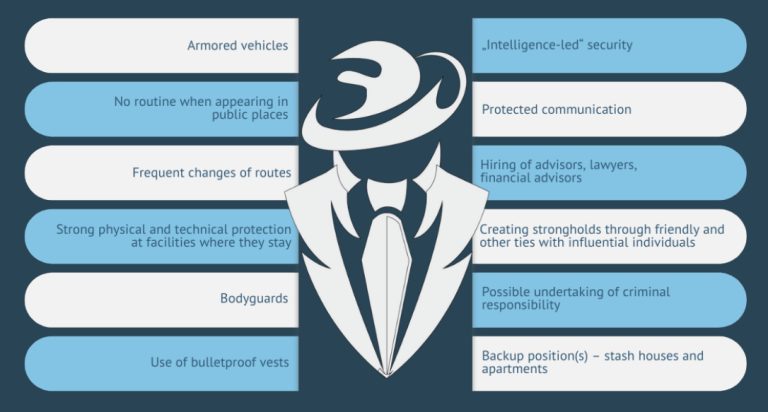
Countermeasures
Most OCGs operating in Serbia have a strict pyramidal hierarchical structure, with a medium level of leader protection and high level of internal discipline. The factor that ensures a stronger protection of the leader is his connection with the members – friendship, family and godfather ties, geographical origin, shared criminal past, continuous proceeds from crime, etc. The fact that some OCG members have not betrayed the organizer and other members despite prosecution demonstrates their loyalty and readiness to protect the group and its criminal activities.
Encryption has become a standard security feature for many channels of communication, including messaging apps. It ensures privacy, confidentiality and data integrity and protection. At the same time, encrypted channels and social media platforms, including private online groups and services, are increasingly used for communication among OCG members, who thus avoid any surveillance and maintain the secrecy of communication.
Another countermeasure which OCG members frequently apply in order to be protected from prosecution is the corruption of individual officials of state authorities.
Financial Power and Money Flows
Most OCGs have considerable financial power – they own large amounts of money on the legal and illegal financial markets, large plots of land and different movable and immovable assets. In order to conceal their assets, they transfer them into the names of third parties or relatives, and in order to facilitate criminal activities, they infiltrate legitimate business structures and even establish legal entities.
OCGs use part of their illegal proceeds to expand their activities, which is especially prominent in the production, trafficking and smuggling of drugs, as the most profitable field of organized crime. The other part is placed into legal financial flows – independently or with the help of organized groups of “professional money launderers” – which completes the individual criminal activity. Greater financial power makes it possible to have better organization, to expand criminal activities and to take a better position on the criminal market, along with a greater possibility of corruptive influence.
Due to their accessibility and anonymity, cryptocurrencies are used for payment in different criminal transactions. Illegal proceeds can be in the shape of virtual currencies or can be digitally converted, which leads to new money laundering techniques.
Corruptive Influence
Most OCGs use corrupt practices occasionally, while only a few of them use corruption as the key method of operation. These are larger and more organized groups, and one can say that corruptive influence is directly proportional to the level of organization of the criminal group. As a way to protect and promote “criminal interests,” corruption requires considerable financial resources. Experience shows that OCGs most frequently use corruption to secure the use of legitimate business structures in order to further increase their proceeds, conceal the commission of crimes, get a better position on the criminal market (or even monopoly in some of its segments) and protection from criminal prosecution, etc. Therefore, corruptive influence can be seen not only as a “connective tissue”, but also as a factor that can considerably favor certain forms of organized crime, as well as the development of new ones.
Links between Organized Crime and Terrorism
As a result of altered global and other circumstances, there has been a major change in the nature of terrorist threats and activities, including the linking of terrorist groups and organizations with organized crime, especially for the purpose of terrorist financing.
Serbia faces specific terrorist threats, including the danger from the use of irregular migrations, which usually arrive from war-torn countries, for the infiltration of terrorists, which increases the possibility of realization of their radical goals in transit countries, rather than only in the destination countries. What makes the situation particularly difficult is the fact that rather than having official IDs, irregular migrants usually have either fake IDs or no IDs at all, which makes it difficult to determine their true identity. Another impediment to identifying potential terrorists among them is also the fact that they generally come from countries affected by war or armed conflict, which makes it difficult to perform an adequate and quick check of their identity.
OCGs that deal with the forging of documents (passports and ID cards) can get in touch with members of terrorist groups and organizations. For a fee, they can provide these persons with forged documents, which they can use to reach a third country.
The supporters of radical religious movements in Serbia include those who are closely connected with organized crime and who use criminal activities to finance the construction of religious buildings, collect donations for religious buildings and rites, and finance other activities aimed at spreading radical ideologies.
Certain ethno-separatists in Serbia originate from former terrorist organizations which used to operate in the territory of AP K&M and the south of central Serbia. At the same time, they are the leaders (or are closely linked with leaders) of organized crime in the territory of AP K&M, in the field of drug smuggling and trafficking, organized prostitution, human trafficking, human smuggling, smuggling and trafficking in weapons, ammunition and explosives, smuggling of excisable goods, extortion, etc.


